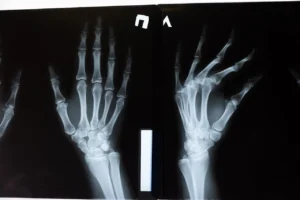
Imagine a contact lens that reshapes the cornea while you sleep, improving your vision. Picture wearing a contact lens equipped with technology to alleviate the strain from increased digital screen time. These innovations and more have been made possible by Xiao-Yu Song, M.D., Ph.D., and her Vision research and development (R&D) team at Johnson & Johnson. Their work has significantly impacted global vision health, addressing various eye conditions from childhood myopia to cataracts in older adults.
As the Global Head of Research & Development for Vision at Johnson & Johnson, Dr. Song leads the development and commercialization of groundbreaking products that address vision problems throughout life. Her passion for problem-solving and patient impact has kept her at Johnson & Johnson for over two decades.
“The short answer to why I do what I do? To make an impact,” says Dr. Song. “I’ve worked in different areas, including academia, but helping people on a large scale—beyond treating one patient at a time—has been incredibly rewarding.”
Dr. Song’s pride lies not in her numerous patents, published studies, or industry awards, including the Johnson & Johnson TECNIS Eyhance™ IOL, which won the prestigious Johnson Medal in 2022 and a Red Dot Design Award in 2023. Instead, she credits her team’s successes as her greatest achievement. “I love celebrating their successes when we get innovations out the door,” she says.
For Healthy Vision Month, Dr. Song shares the childhood experience that inspired her to work in healthcare, her dedication to R&D, and her hopes for the future of eye health.
Q: Growing up, what was the first clue that you would pursue a career in healthcare? A: My mom was an ear, nose, and throat doctor. When I was about 4, she took me to the hospital outpatient clinic where she worked. I watched her see patient after patient, tailoring her response to each individual’s needs. The patient-doctor interaction fascinated me and sparked my interest in healthcare.
Q: What part of your work do you enjoy the most? A: I love delving into the science—understanding a disease, identifying its cause, and finding the right solution. This drives me every day and is why I’ve remained in R&D throughout my career.
Q: What’s one of the biggest challenges of your job? A: Persevering through unsuccessful studies can be challenging. It often takes multiple experiments and approaches to find the answer. This process can be anxiety-inducing, but I try to stay patient and focused on solving the problem.
Q: Why is advancing diversity and inclusion in healthcare such a priority? A: Our patients come from diverse backgrounds, so our teams should reflect this diversity to generate better ideas and approaches. I’m passionate about ensuring the next generation of STEM leaders represents all populations. That’s why I’m involved as the executive sponsor of the Johnson & Johnson WiSTEM2D University Pillar chapter in Jacksonville and an active member of Women in Ophthalmology. Women comprise 20% of the field but are often absent in key leadership positions. I aim to help change that.
Q: What eye-health breakthroughs do you hope to see in your lifetime? A: I hope to see more breakthroughs in managing myopia progression. High myopia increases the risk of developing retinal diseases that can lead to vision loss. With myopia prevalence doubling over the last 20 years and projected to affect one out of two people by 2050, addressing it as a progressive disease is crucial. We’re currently tackling myopia with two products for myopia management, but we also aim to prevent myopia progression through ongoing research and development.




